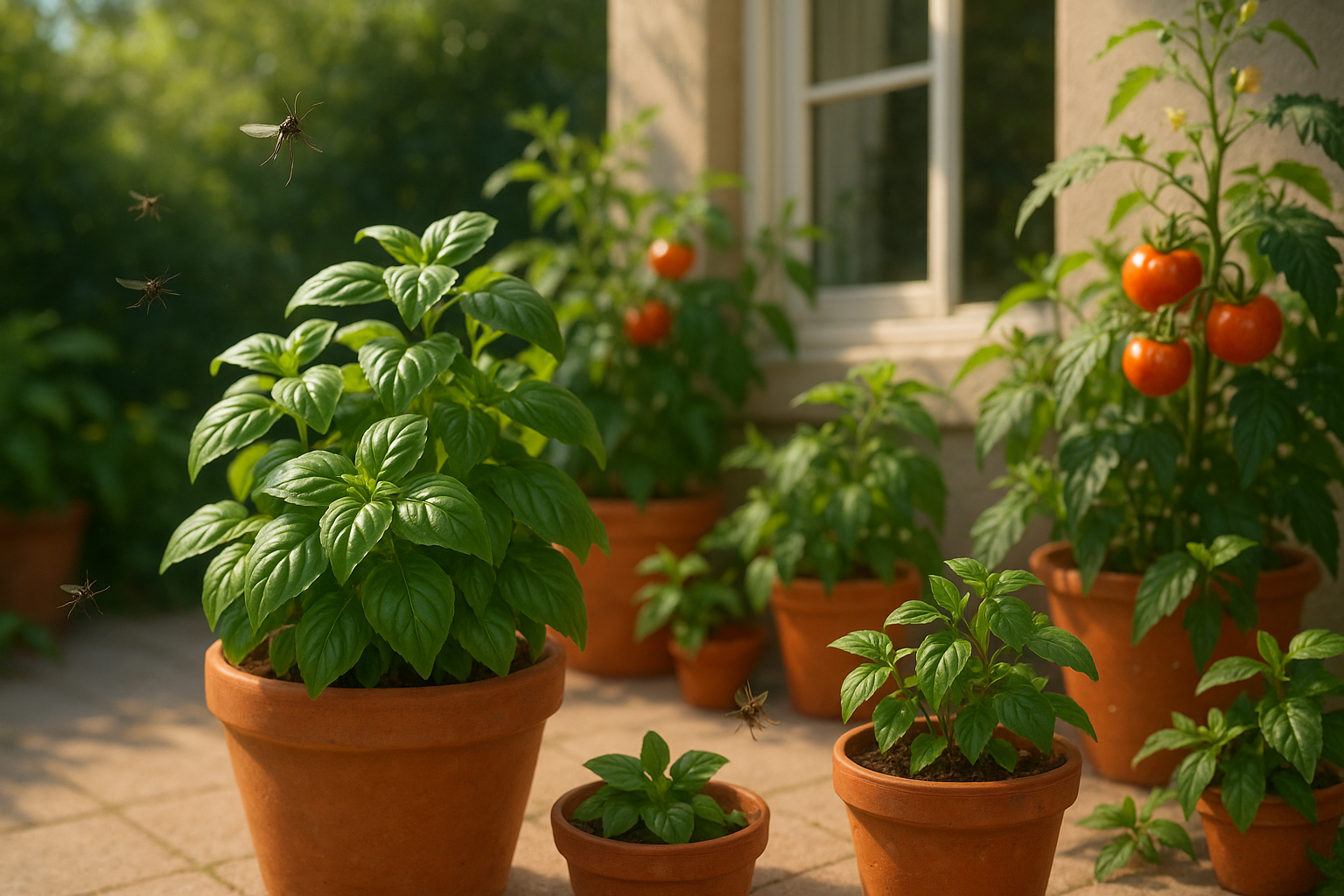Introduction
Basil as an insect repellent is gaining popularity among gardeners and homeowners eager to reduce their reliance on harsh chemical pesticides. With growing concerns about the impact of synthetic sprays on the environment, pets, and health, more people are seeking safer, natural ways to keep bugs at bay. Basil’s effectiveness comes from its potent scent and the essential oils it releases—compounds like eugenol, citronellol, and linalool that confuse and repel common pests.
If you’ve ever brushed past a basil plant and noticed its strong, spicy aroma, you’ve experienced its natural defense in action. This simple herb works wonders against mosquitoes, flies, aphids, and even some beetles, making it a valuable addition to gardens, patios, and sunny windowsills. The best part? Using basil as a deterrent is not only easy but fits seamlessly into your daily routine—whether you’re growing fresh basil indoors, tucking plants among your tomatoes, or placing a pot by your entryway.
In this post, you’ll learn practical steps to harness the pest-repelling power of basil, discover clever planting strategies, and find tips for turning fresh basil into homemade sprays that work wonders on common bugs.
How Basil Repels Pests
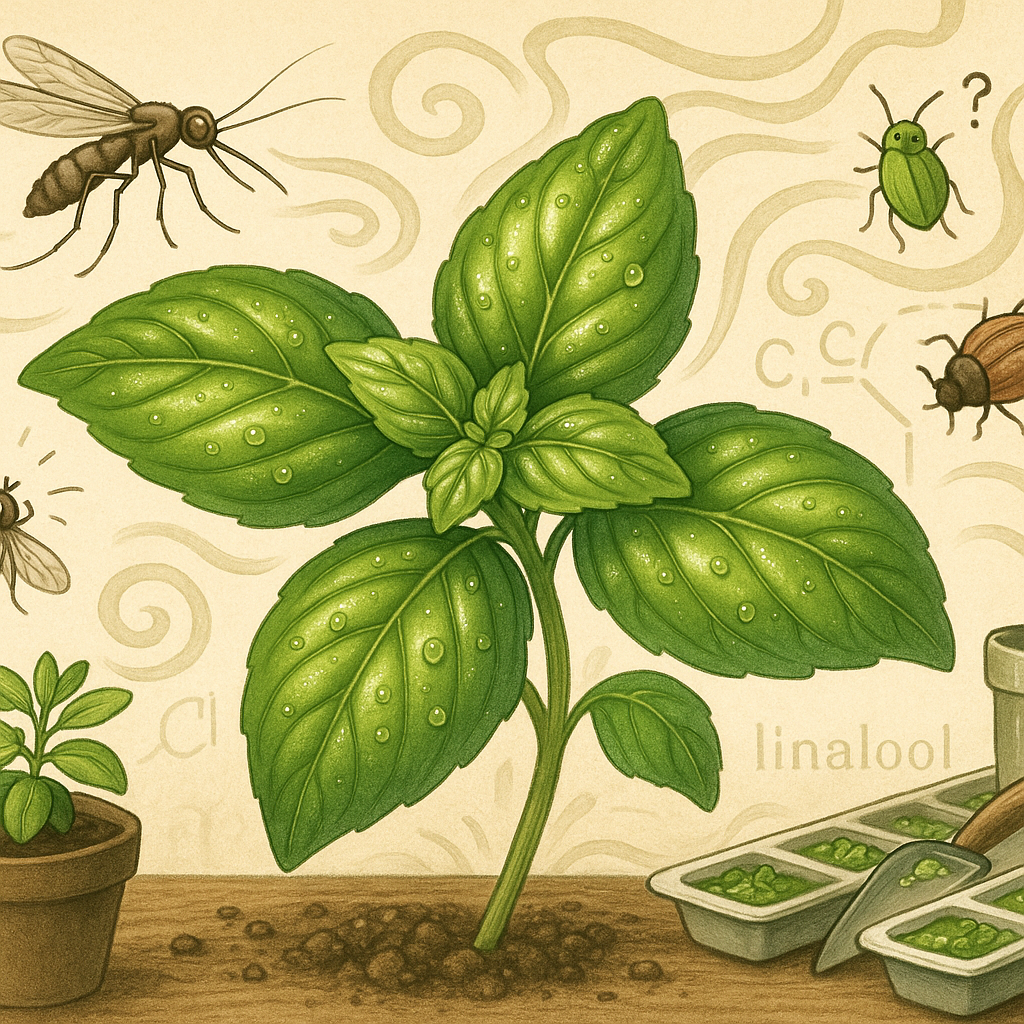
Basil’s reputation as a pest-repelling herb isn’t just anecdotal—science backs it up. The secret lies in its essential oils, notably linalool and eugenol, which are naturally occurring compounds responsible for basil’s distinctive aroma. These compounds work by masking the scent trails that insects use to locate food and breeding sites, essentially disorienting them.
Several common garden pests—especially mosquitoes, houseflies, aphids, and thrips—are particularly sensitive to these aromatic chemicals, according to research published in the Journal of the American Mosquito Control Association. For example, linalool is proven to disrupt mosquito navigation, while eugenol is effective against a wider array of bugs.
When you plant basil near doorways, patios, or among vegetables, the fragrance creates a non-toxic barrier, reducing pest presence without the harshness of chemical sprays. Plus, these oils are safe for humans and pets, so there’s no worry about toxic residue or adverse effects if curious kids or animals brush against your basil patch.
Many home gardeners endorse this effect, often citing fewer bites and less visible insect damage on neighboring plants. If you’re looking for a practical tip, try placing basil pots on sunny windowsills, balconies, or among tomatoes and peppers—spots where pests typically gather.
With science on its side and years of successful use in gardens worldwide, basil stands out as both a flavorful addition and a gentle yet effective pest deterrent for your home and garden.
Best Ways to Use Basil for Pest Repellent
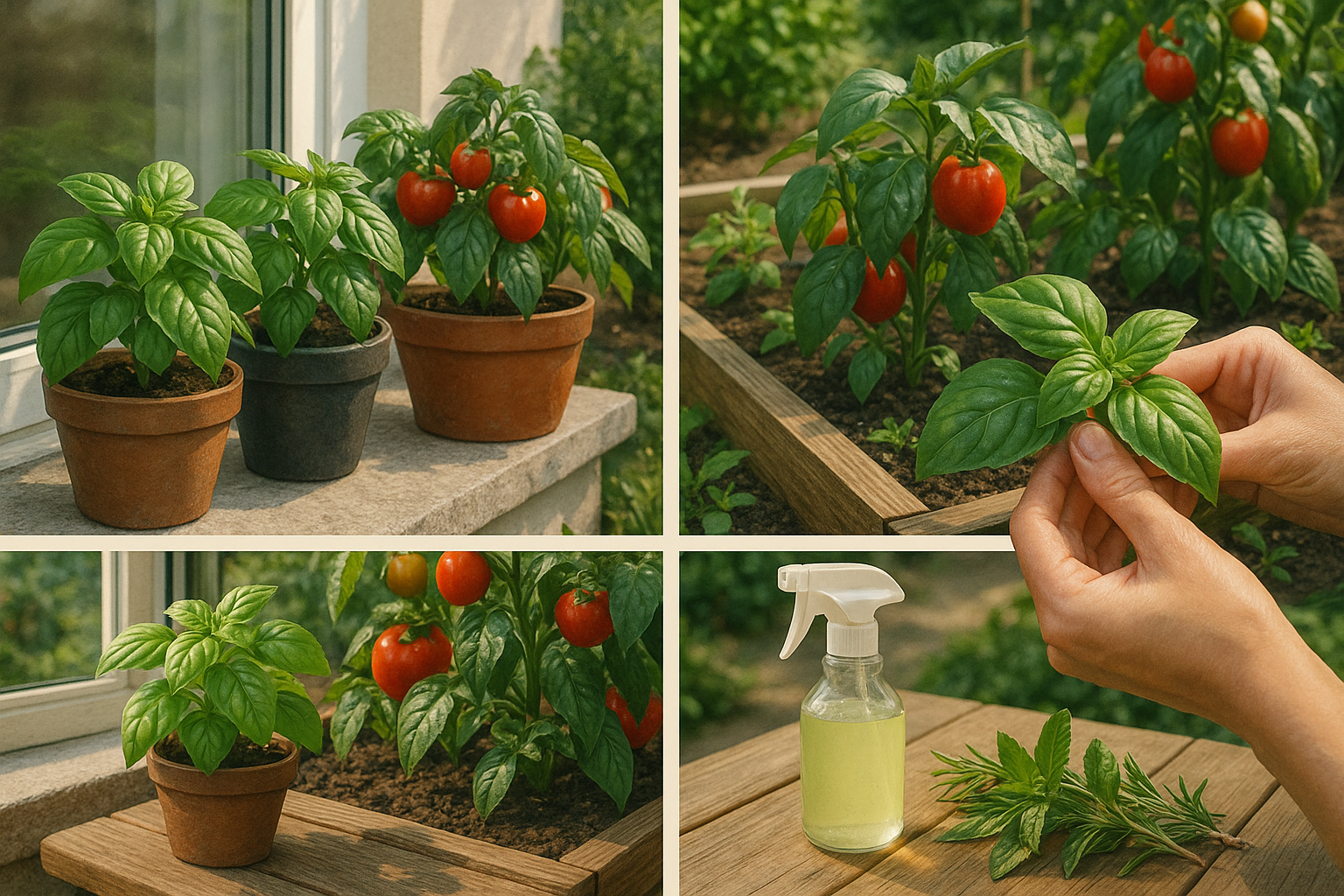
Planting basil around your home is a simple, natural way to keep pesky insects at bay. Place basil in garden beds or pots near patios, doorways, and windows—these strategic spots not only give you easy access when cooking but also help create a protective, fragrant barrier against bugs like mosquitoes and flies.
Basil can be grown directly in soil or containers, making it perfect for small balconies or windowsills. For immediate pest control, crush a few fresh basil leaves to release their oils and rub them onto your skin, picnic tables, or window sills.
Alternatively, you can make a quick basil spray: steep a handful of fresh leaves in boiling water, let it cool, strain, then pour into a spray bottle and spritz on problem areas.
While having basil plants nearby provides ongoing effectiveness—with their scent subtly dispersing through the air—using crushed leaves or homemade sprays offers a more potent, targeted approach, especially for specific spots or during peak bug hours.
For enhanced pest-repelling power, plant basil alongside other aromatic herbs like mint, rosemary, or lavender. These combinations create a multi-sensory deterrent, confusing and repelling a wider range of pests. Remember to refresh your harvested leaves regularly and position pots where air currents can carry the scent, such as near fans or open windows.
Taken together, these easy strategies help transform your outdoor areas into fragrant, bug-free retreats, all while keeping fresh basil close at hand for your next meal.
How to Make Basil-Based Natural Repellent Sprays
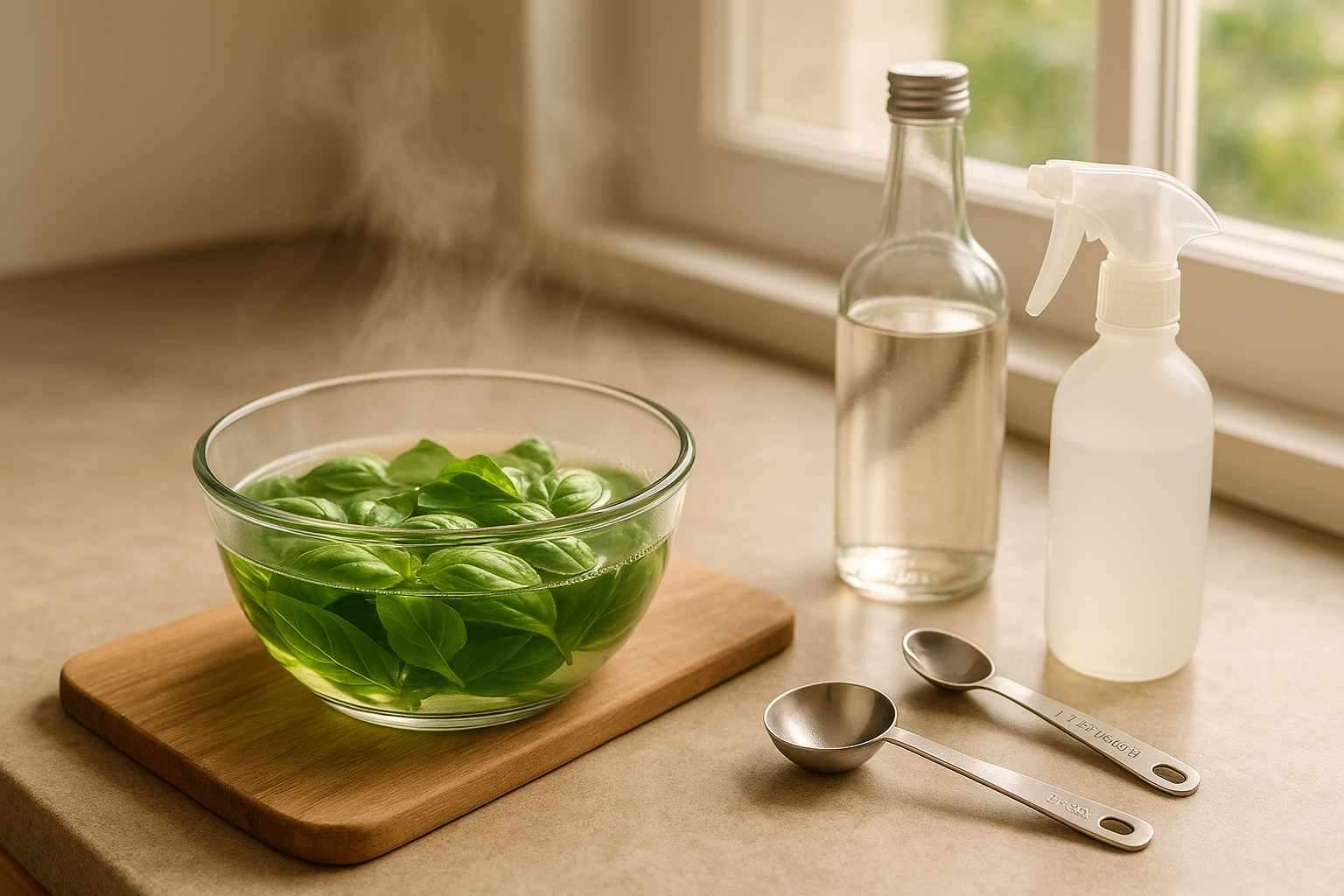
Making your own basil-based natural repellent spray is simple and effective. It helps keep pests like mosquitoes and flies at bay without using harsh chemicals.
Ingredients and Materials
- 1 cup of fresh basil leaves (about a handful)
- 1 cup of distilled water
- 1 tablespoon of vodka or witch hazel (to help the solution last longer)
- Optional: 10-15 drops of basil essential oil (if you prefer a stronger scent or don’t have fresh basil)
- Heatproof bowl
- Clean spray bottle
Instructions
Start by tearing the basil leaves to release their oils, then place them in a heatproof bowl. Pour boiling distilled water over the leaves and let the mixture steep for 2-4 hours. After steeping, strain out the leaves.
Once the mixture has cooled, add the vodka or witch hazel. Pour the finished liquid into a clean spray bottle.
If you’re using basil essential oil instead of fresh leaves, add the drops directly to the cup of water. Shake the mixture well before each use, since oil and water separate.
Usage and Safety Tips
- For families with pets or children, test the spray on a small surface before widespread use.
- Avoid direct application to skin, eyes, or on pets, as basil oil can be irritating in large amounts.
- Use the spray on doorways, windowsills, and outdoor areas like patio furniture.
- Avoid spraying on sensitive houseplants since some herbs and essential oils may harm delicate leaves.
Storage
Store your spray in a cool, dark place and use it within two weeks for the best potency. Always label the bottle clearly to avoid confusion.
By following these steps, you’ll create a natural, safe deterrent that’s easy to make and gentle on your home environment.
Integrating Basil with Other Companion Plants
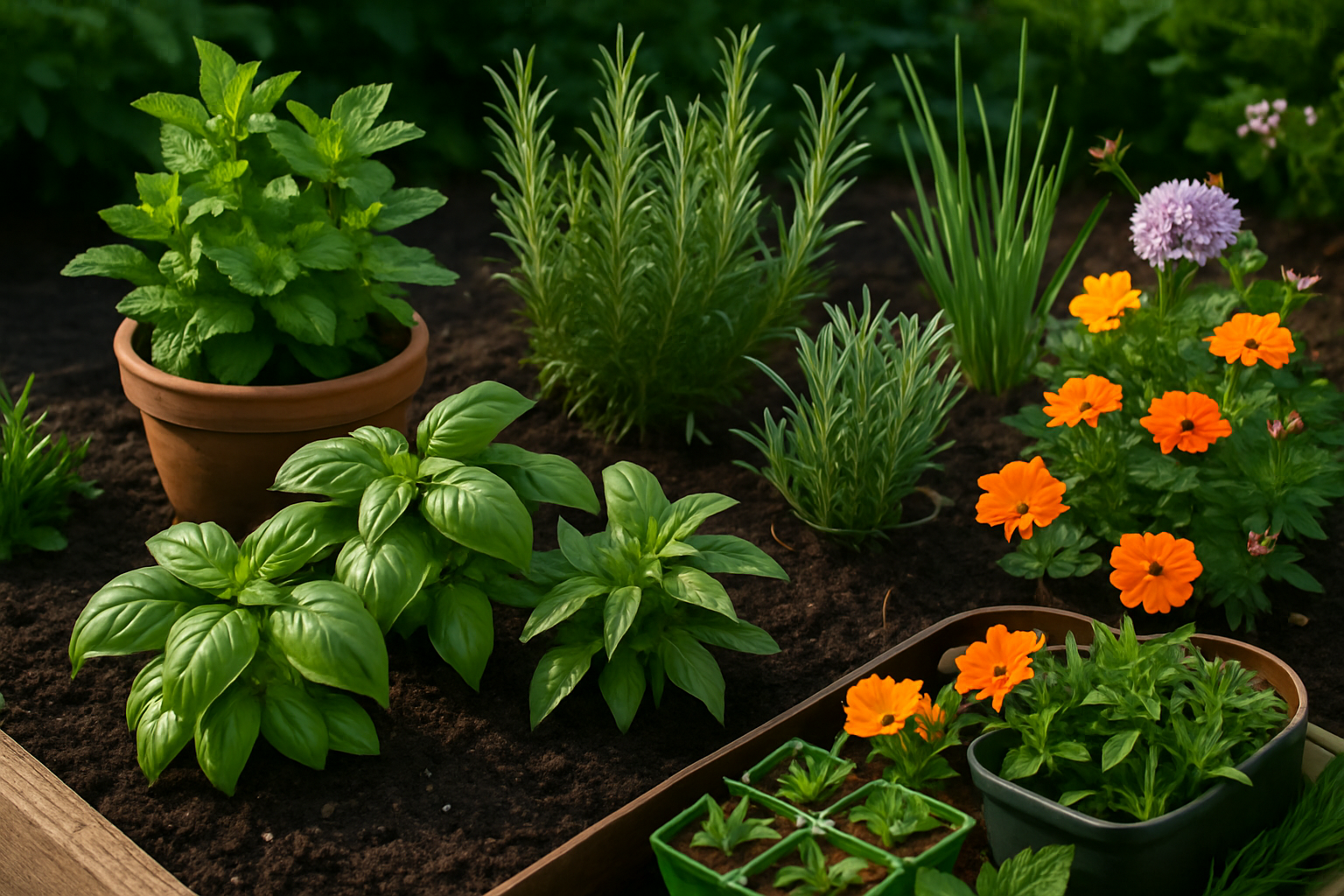
Pairing basil with other pest-repellent plants can give your garden a major boost in health and resilience. For instance, marigolds are famous for deterring nematodes and aphids, and they thrive next to basil, creating a powerful pest-fighting duo.
Rosemary and sage are also strong choices; they ward off cabbage moths and carrot flies, making them excellent neighbors for basil and vegetables like carrots and cabbage. Mint, when kept in a container to prevent it from spreading, repels ants and flea beetles—so consider placing potted mint near basil clusters or at the edges of raised beds.
Integrating basil with these companions doesn’t require much space. In a traditional in-ground plot, try alternating rows of basil and marigolds between your tomato or pepper plants. For small patios or urban containers, group basil with rosemary and mint in separate pots within the same tray—this way, you harness their benefits without risking overcrowding.
If slugs are a problem, adding chives or garlic can help, as their scent keeps slimy invaders at bay. For gardeners facing aphid issues, the basil–marigold–rosemary trio creates a strong line of natural defense.
Ultimately, mixing basil with compatible herbs and flowers encourages a diverse ecosystem, reduces the need for chemical pesticides, and can make garden maintenance easier. Adapt these combinations and layouts to fit your available space, and enjoy healthier plants with fewer pests all season long.
Practical Tips for Growing Healthy Basil
Growing healthy basil is simple when you focus on a few essentials. Basil thrives in warm, sunny spots, so choose a location—whether a windowsill or garden bed—that gets at least six hours of sunlight each day.
Use well-draining soil rich in organic matter, and water your basil when the top inch of soil feels dry, avoiding soggy roots. For containers, pick pots with drainage holes and use a high-quality potting mix.
Indoors, rotate the plants regularly so all sides get sun, and avoid placing them near drafts from AC or heating vents. Pinch off the top leaves regularly to encourage bushy growth, and harvest often—but never take more than a third of the plant at once.
Watch for pests like aphids or slugs. Healthy basil naturally repels some insects, but keep an eye out and remove any invaders by hand or with gentle sprays of water. Downy mildew and fungal spots can be prevented by watering at the base and ensuring good airflow.
Whether grown on a sunny patio or a well-lit kitchen counter, following these tips will keep your basil thriving and flavorful, ready for salads, sauces, and pesto all season long.
Conclusion
Basil is much more than just a flavorful herb; it’s a secret weapon for any gardener looking to naturally keep pests at bay. Its strong scent not only repels unwanted insects like mosquitoes and aphids but also attracts beneficial pollinators, helping to create a healthier, more sustainable garden.
Adding basil to your garden beds or containers is a simple, chemical-free way to boost your plants’ defenses. Try planting basil alongside tomatoes, peppers, or lettuce and watch how well they thrive together. By experimenting with companion planting, you’ll discover which combinations work best in your space—making gardening easier and more rewarding.
